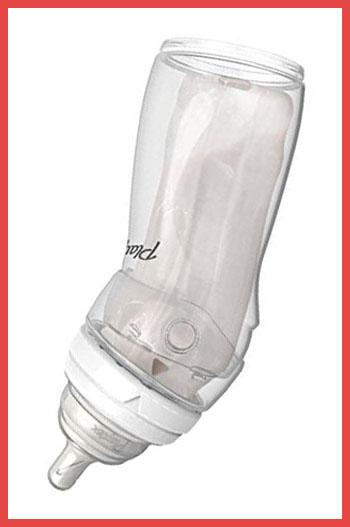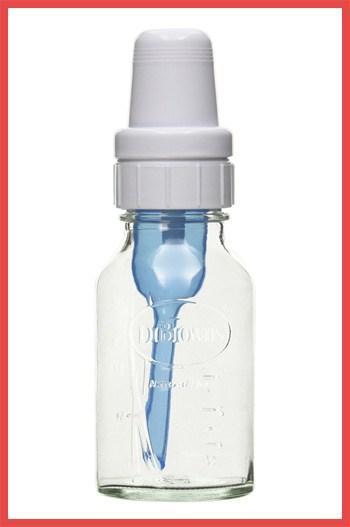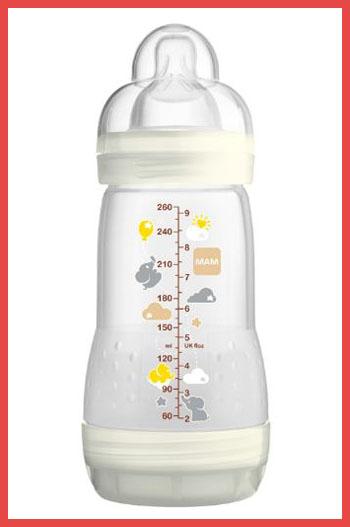You’ve probably been feeding yourself for so long that it seems like feeding your baby should be no big deal.
Some babies feed easily, latching onto the bottle quickly and sucking peacefully.
Others cry and stretch at every feeding, having a very hard time getting comfortable or relaxing enough to eat well.
Here are some tips for recognizing gas and colic in your baby and for choosing the best bottles for colic and gas.
What’s in this guide?
- Best bottles for Gassy and colicky Babies?
- Causes & symptoms of gas
- How do you know if your baby has colic?
- Suggestions to treat colic & gas
What Are The Best Baby Bottles for Gassy Babies?
Choosing the right bottle is often an emotional choice, especially if you are a nursing mom who would rather not give your baby a bottle at all. The first step is to remind yourself that it’s perfectly acceptable to feed your baby from a bottle. Most babies are able to switch easily from bottle to breast after they have gotten used to latching on and you have found a nipple that works well for your baby. So what are the best baby bottles for gassy babies? Here’s some advice.
Bottle Options for Babies with Gas and Colic
Bottle Our Rating
MAM A-
Dr. Brown's A-
Playtex B
There are so many bottles and nipples on the market that it’s nearly impossible to review them all, but here are a few options that may be the best bottles for colic and gas for your baby.
Playtex Nursers Drop-Ins BPA-Free Bottle

You can throw the liners in the garbage after each use, giving you less to clean and more time to spend snuggling your baby.
Some moms found the flow through the nipple to be too fast for their baby, so be sure to try several nipples to find one that allows your baby to drink easily without spitting up excessively or getting covered in milk.
You can find the bottle here and liners here
Pros
- The bottles are less expensive than most
- Tossing the liner means cleanup is easy
- Playtex has many nipples choices, so there is likely one that works for your baby
- Getting air out of the bottle is simple, and less swallowed air means less gassiness for your baby
Cons
- Some moms have trouble accurately measuring how much their baby is eating with drop in bags
- The bags add to your garbage pile and are not environmentally friendly
Dr. Brown’s Natural Flow Glass Bottles

Pros
- These bottles are easy to clean and sterilize
- Glass is better for the environment than plastid
- They are free of chemicals and have no labels that can wear off over time
Cons
- Glass bottles are heavier than plastic
- The liquid inside the bottle heats quickly
- They are expensive
- Some daycare centers don’t allow glass bottles
MAM Feed & Soothe Bottles

Pros
- Marked for easy measuring
- Soft nipples make switching between bottle and breast easier
- Designed to be easy for baby to hold
- Comes with a plastic cap to keep the nipple clean during transport
- Easy to sterilize
Cons
- Milk may drip too fast from the nipple
- Many moms had issues with leakage from these bottles
- Many parts to clean
What Causes Babies to Have Gas?
All babies have gas in their systems, and it is normal for them to burp and fart many times in a day. The gas might come from digesting formula or breast milk. The gas might also be caused by air that the baby swallowed when they were eating or crying. This gassiness is totally normal and some babies aren’t even bothered by it. Other babies get horrible pains in their tummies from gas. Breastfed babies may get gas pain more frequently than babies who drink formula. It’s best to choose foods that are gentle on the stomach and not known to cause gassiness if you’re nursing a gassy baby.
Symptoms of Gas Pain
Babies who are in pain from gas react in many ways, so don’t be alarmed if your gassy baby has different symptoms than your friend’s gassy baby. Here are some of the most common symptoms of gas pain in babies:
- Vomiting
- Burping
- Farting
- Stomach cramps
- Trouble sleeping/ frequent waking
- Crying for no obvious reason
What is Colic?
Having a colicky baby is one of the hardest things a mom can go though, especially if you’re a new mom that can’t figure out why your baby is crying. There is no official definition of colic, but most doctors consider a baby to be colicky if they consistently cry for at least three hours per day, at least three days per week, for more than three weeks. Many babies with colic never seem to stop crying, and most have trouble sleeping for more than a couple of hours at a time.
Symptoms of Colic
All colicky babies don’t have the same symptoms, but most of them show similarities. These similarities include:
- Pulling the legs up or extending them
- Clenching fists while crying or passing gas
- Hardened tummy
- Crying more in the evening hours
- Baby seems like they’re in pain when they cry
What Can You Do if Your Baby Has Colic?
Having a baby with colic may seem like a terrible fate, listening to your baby cry for hours on end with no relief. It’s normal to feel sad and helpless when your baby is crying, but there are some things you can do to help your baby get through colic and save your sanity.
Suggestions for Soothing a Colicky Baby
- Choose a bottle that is designed to allow as little air into your baby’s system as possible. The best bottles for colic and gas are designed with vent systems that remove air from the bottle before the baby can swallow it.
- Hold baby upright while feeding and any time they are uncomfortable, as gravity will help them get the gas bubbles out of their system.
- A warm bath can be very soothing for both you and your baby, try putting lavender into the bath for a more soothing affect.
- Talk to other moms and/or your baby’s doctor. It’s smart to talk to moms of older babies when you are having issues with feeding and crying. They will help you recognize what is normal and can give you tips that worked to soothe their babies. Bring up your baby’s crying and gassiness at a pediatrician appointment if you feel like there is more going on in your baby’s body than gas and fussiness.
You can also read this article: Colic: what to do
Choosing the best bottles for colic and gas is the ultimate goal, but you’ll likely have to go through several combinations of bottles and nipples before you find the right combination for you and your baby. Don’t be afraid to ask other moms for advice, but remember that what worked for their baby may not work for yours. Don’t give up, even if your baby is crying. It’s important to keep trying and remember that the right bottle is out there, you just have to find it.
